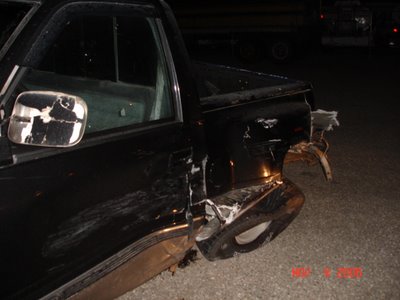Over at
Sam’s site he discussed use of automation and flight directors on one of his blogs. He discusses how he uses his fancy computers, gadgets and whiz-bangs to help him fly the plane. The aircraft he flies has a “glass” cockpit that is by far and away a superior instrumentation system compared to what I fly.
None of the aircraft at my company have “glass” cockpits. We use what are commonly nicknamed “steam gauges”. Our aircraft are all old and outdated by today’s standards. For instance, our standard “6 pack” of instruments, Airspeed, Artificial Horizon, Altimeter, Vertical Speed Indicator, HSI and RMI or Turn Coordinator (depending on aircraft) are six separate gauges/instruments in our aircraft. These instruments require constant scanning and over time you develop an eye scan that covers everything quickly and efficiently. Pilots using glass cockpits have all of the information from those 6 instruments plus additional data available directly in front of them in a format that reduces the amount of scanning needed. These screens are great. They make flying the plane significantly easier.
Raw data was also a term that Sam used. This is flying the aircraft by use the instruments only. This is the type of flying that I do 95% of the time. Most of the aircraft at my company do not have Flight Directors set up on the co-pilots side. None of the Lear’s have them on my side, but the some of the Falcon’s do. Most of the Falcons have attitude indicators that have a built in glideslope and localizer on them. Those really help. Sometimes I wish we had more, especially when flying an approach. The Lear has a nasty little design problem that makes it difficult to get a good look at the HSI. The center of the control wheel blocks your view of a good portion of the instrument unless you lean to the side and sit straight up in the seat. It is an awkward position to fly the aircraft.
We are lucky if we have an autopilot that will hold a decent heading or altitude. I’m joking, usually they do just fine, usually. About only time I ever have the autopilot on is in cruise or when we are busy in the cockpit. Other than that, I almost always hand fly the plane. This has led to me becoming proficient with my stick and rudder skills. Having spoken with pilots that fly more automated aircraft, this will probably be my last job where I am afforded this luxury (or burden depending on your view of autopilot use). The bigger the aircraft, the more people or cargo they hold, the newer they are, the more automation they have built in.
On another note, last Friday I was heading home via regular airlines. My route was to take me through O’Hare. Can you guess if I made it home on time?
KORD 102351Z 01025G32KT 4SM TSRA BR BKN013CB OVC018 06/04 A2982 RMK AO2 PK WND 01037/2338 TSE22B41 PRESRR SLP101 FRQ LTGIC ALQDS TS ALQDS MOV NE P0030 60051 T00560039 10072 20050 51026
KORD 102343Z 36019G37KT 10SM TSRA BR BKN013CB OVC018 06/04 A2981 RMK AO2 PK WND 01037/2338 TSE22B41 PRESRR OCNL LTGIC S-NW TS S-NW MOV NE P0027
KORD 102324Z 02021G32KT 10SM RA BR FEW008 BKN012 OVC050 06/04 A2978 RMK AO2 PK WND 01032/2319 TSE22 OCNL LTGIC DSNT NE TS MOV NE P0027 $



